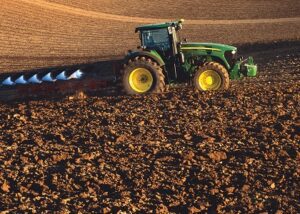
The USDA released its 2014 report on prospective planting for the upcoming farming season a little over a week ago. Being a numbers person, I like to dig through these types of reports to see what interesting facts I can find. I will focus on corn and soybeans since I am in Iowa and that is about all we grow around here so those are the crops with which I am most familiar. Plus, those two crops comprise 40% of the total farmed acres in the United States.
In 2013, intended acres planted of corn was 97.3M but actual acres planted ended up at only 95.4M. Corn acres for 2014 are expected to be even further down to 91.7M acres, a 4% drop from 2013 actuals and a 6% drop from 2013 intended. Meanwhile soybeans are the recipient of most of those acres that will not be planted as corn, with an intended acreage increase of 6% over 2013 actual acres, almost 5M acres. Why are so many corn acres being replaced with soybeans?
Looking at the cost side, Iowa State issues an interesting report on Estimated Costs of Crop Production in Iowa each year. That shows corn costing at least $4.25/bushel following beans but closer to $5/bushel following corn; soybeans costs are a little over $11/bushel. As for expected prices this year, corn is broadly suggested to be in the $4/bushel range and soybeans will similarly be in the $10/bushel range. Treating all those numbers as the gospel truth, a farmer stands to lose $150/acre for corn following corn, but only loses $50/acre for corn following soybeans or $50/acre for soybeans following corn. This seems clear to me that most farmers are moving to more soybeans this year as they establish a new corn/soybeans annual rotation.
Are all farmers really facing a loss in 2014? The year certainly does not look as promising as some prior years, but there are approaches a farmer – or any business person – can use to improve the bottom line. Cutting costs is one approach, but can only help so much before it starts to harm the long-term health of the business. The flip-side to that approach is to invest in new technologies that will improve efficiencies: prescription mapping, variable rate application, precision guidance, etc. New technologies are reducing fuel, overlaps, and unnecessary application while also reducing time and wear-and-tear on equipment. In addition, many of these technologies are producing mountains of data that has value … but that will be a topic for another blog post.
One last math-nerd comment to the USDA about their report, from page 34: if your confidence interval for Durum wheat is really 30%, you should probably just not bother reporting it. I like pasta as much as the next person, but that amount of uncertainty renders the numbers almost useless and implies that it should just be rolled into the Other spring wheat category.

